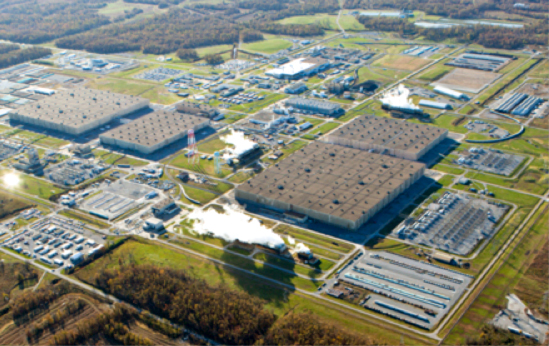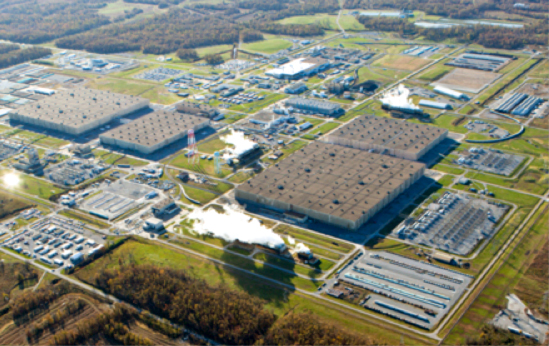 Paducah Gaseous Diffusion Plant. Photo credit: USEC/U.S. Department of EnergyIn a two-part series, Geoffrey Sea of Neighbors for an Ohio Valley Alternative (NOVA) has exposed deep financial troubles which could lead to major radiological risks at the Paducah gaseous diffusion uranium enrichment plant in Kentucky. Mind boggling mismanagement, or worse, by U.S. Enrichment Corporation (USEC) and the U.S. Department of Energy (DOE) are to blame.
Paducah Gaseous Diffusion Plant. Photo credit: USEC/U.S. Department of EnergyIn a two-part series, Geoffrey Sea of Neighbors for an Ohio Valley Alternative (NOVA) has exposed deep financial troubles which could lead to major radiological risks at the Paducah gaseous diffusion uranium enrichment plant in Kentucky. Mind boggling mismanagement, or worse, by U.S. Enrichment Corporation (USEC) and the U.S. Department of Energy (DOE) are to blame.
Part I, entitled "Countdown to Nuclear Ruin at Paducah," was published May 22nd, and warned that there were just 9 days left to avert a "dirty shutdown" in the many miles of enrichment cells. If the uranium laden gas solidifies within the system, it will make eventual decommissioning and clean up astronomically expensive for taxpayers, and radiologically risky for workers.
Part II, "Slow Cooker at Paducah Comes to a Boil," was published May 28th, with only three days left to avert dirty shutdown.
Paducah has operated since the 1950s. Sea reports that Paducah, which employs the highly energy intensive gaseous diffusion uranium enrichment process, has the single biggest electric meter in the country, electrified by two dirty coal plants. It is also one of the single biggest emitters of ozone layer destroying CFC-114, which also happens to be a very potent greenhouse gas.
In September 1999, Joby Warrick of the Washington Post broke the story that post-reprocessing uranium from Hanford Nuclear Reservation, containing fission products and transuranics, had been secretively run through Paducah. Local residents, such as Ron Lamb, had already been long protesting Technetium-99 in his drinking well water, however. Paducah whistleblower Al Puckett helped expose a secret dumping ground for radioactive and hazardous wastes on site. Such revelations help to explain the high cancer rate amongst Paducah workers and area residents.
As Sea reports, USEC is still seeking a $2 billion federal loan guarantee from the Obama administration for its proposed American Centrifuge Plant at Portsmouth, Ohio. Newly confirmed Energy Secretary Ernest Moniz has deep ties to USEC, both during his time in the Clinton DOE, as well as afterwards, as a paid private consultant.
Update on May 31, 2013 by
 admin
admin
As reported by the Times Free Press, the federal Tennessee Valley Authority has lost its single biggest electricity customer with the imminent closure of the Paducah gaseous diffusion plant. TVA is itself suffering financial woes, due in large part to problems at its Browns Ferry nuclear power plant, and a $1.5 billion cost overrun at its Watts Bar 2 atomic reactor.
 Paducah (uranium enrichment) Gaseous Diffusion Plant. Photo credit: U.S.E.C./U.S. Department of EnergyDespite being permanently shutdown on June 1st, the Paducah facility experienced a radioactivity contamination accident on June 28th, according to a U.S. Nuclear Regulatory Commission (NRC) incident report dated July 2nd. The radioactivity contamination accident stemmed from a water leak. Given the mountain of radioactive materials at Paducah, such radioactive contamination risks to the facility, the environment beyond, and the people who live there (some directly across dirt roads from the fence line, in a community already showing signs of significantly elevated cancer incidence and death rates) will continue far into the future, despite the facility's welcome permanent shutdown.
Paducah (uranium enrichment) Gaseous Diffusion Plant. Photo credit: U.S.E.C./U.S. Department of EnergyDespite being permanently shutdown on June 1st, the Paducah facility experienced a radioactivity contamination accident on June 28th, according to a U.S. Nuclear Regulatory Commission (NRC) incident report dated July 2nd. The radioactivity contamination accident stemmed from a water leak. Given the mountain of radioactive materials at Paducah, such radioactive contamination risks to the facility, the environment beyond, and the people who live there (some directly across dirt roads from the fence line, in a community already showing signs of significantly elevated cancer incidence and death rates) will continue far into the future, despite the facility's welcome permanent shutdown.




 July 9, 2013
July 9, 2013
